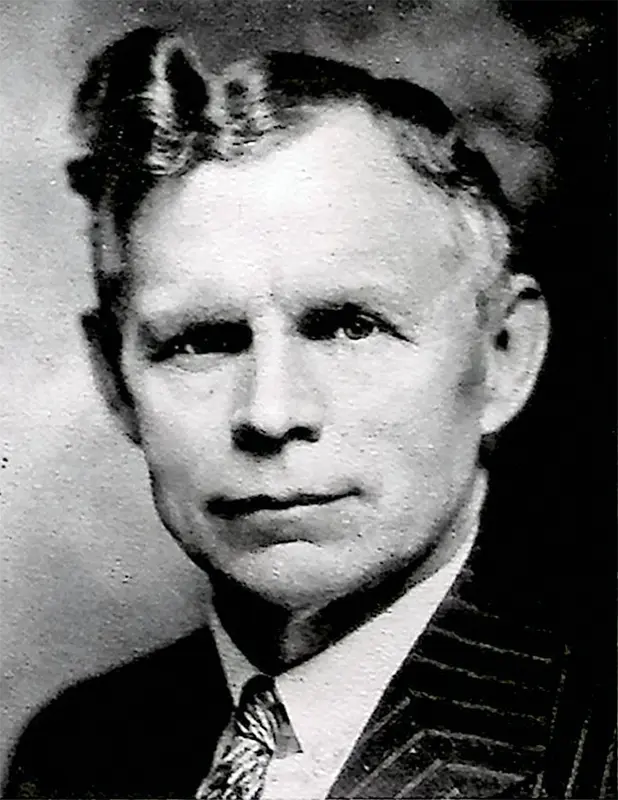Womack Hall

Namesake
Dates
- Built: 1936
- Named: 5/25/1936
Map
History
In 1936, Henderson inaugurated its most extensive program for buildings to date. The College received approval for an allotment of $278,000 on September 30, 1935, from the Public Works Administration for the construction of an apartment-dormitory for women, a dormitory for men, a home for the President, and a central heating plant. However, because of legal tangles and various other delays, the College did not receive the work order until March, 1936. Once begun, the work continued on schedule. R. T. Higgins of Hot Springs, the contractor for the project, hired about 150 men so that the work could continue simultaneously on all four buildings.
The two dormitories and the President's home followed the same Colonial architectural style and had the same shade of brick as that used for Mooney Hall.
The women's apartment-dormitory, the largest building in the group, was located across the campus driveway and to the northeast of Mooney Hall and faced Highway 67. It could house 124 students-- 52 more than Mooney Hall. On the first floor, the dormitory featured 13 apartments with kitchenettes for those desiring to do their own housekeeping; on the second floor, the dormitory contained a lounge and bedrooms; on the third floor, bedrooms. The girls began moving into the dormitory the first of October, 1936. At a Board meeting on May 25, 1936, the Trustees voted to name this new dormitory Womack Hall in honor of President Joseph Pitts Womack.The College dedicated the four new buildings and The Hut in a special ceremony in the College Auditorium at 1:00 p.m. as part of the Homecoming events on Saturday, October 31, 1936. Several dignitaries were present at the ceremony. United States Senator Hattie Caraway of Arkansas, a special guest, spoke briefly. Attorney General and Governor-elect Carl Bailey delivered the principal address. He praised the work of the national government and “pointed out the value of educated men and women to the country.” In his talk, President Womack stated that the “whole credit for the expansion of Henderson did not rest in his hands but also with the legislature and the Board of Trustees”.
After the completion of the three new dormitories in 1951, the College designated that for the year 1951-52, women would live in The Oaks, The Holly and Mooney Hall; men, in The Pines, Foster Hall, and the second and third floors of Womack Hall. Following this adjustment in living quarters, men no longer lived in the rooms beneath Haygood Stadium. Married couples lived on the first floor of Womack. When married students occupied Garrett Hall in 1955, Womack Hall then became a dormitory for 155 men. When Newberry Hall opened in September, 1968, the College renovated Womack and Foster Halls to house women students.
On February 8, 1972, the Trustees approved the remodeling of Womack Hall for an Administration Building in preference to new construction. On June 21, 1973, the Board awarded the contract for the renovation of and additions to Womack Hall to Archie Sutton, whose bid was $1,025,000, about $225,000 in excess of the funds budgeted for the construction. However, the Board authorized the Administration “to take the action necessary to permit acceptance of a bid to construct a functional building to be an appropriate 'front door' to the campus.” This action necessitated “meetings with the architect, engineers, contractors, subcontractors, and representatives of the College to determine a schedule of the costs that can be reduced.” As finally approved by the proper authorities, Womack Administration Building had a construction budget of $1,177,051, funded by an appropriation of $442,000; bonds, $720,000; and cash, $15,051. The work of stripping the building to a shell and foundation began in the late summer of 1973.
By the time of its completion in late December, 1974, the new Administration Building of modern functional design bore little resemblance to the Womack Hall that was a dormitory. The new Hall was also wrapped in an additional layer of dark red brick. During the semester break in January, 1975, the Administration completed the move from the inadequate space on the first floor of McBrien Hall to the more ample quarters in Womack Hall. However, Womack Hall housed more than the Administrative Offices. On the first floor were located the Computer Center; the Public Affairs Office, including the Alumni and Public Information Offices; the Counseling Center; the switchboard and information desk; and a faculty post office. On the second floor were Offices for the Registrar, Dean of the Graduate School, and Student Affairs. And on the third floor were Offices for the President and the four Vice Presidents; the Business Office Suite; and Conference Rooms. In addition, Womack Administration Building had wide indoor and outdoor stairways and an elevator. It included adequate reception areas for the offices, wide halls to accommodate the flow of traffic, and sufficient storage space on each floor.
Womack Hall continues to serve as the Administration Building as of 2024.
"